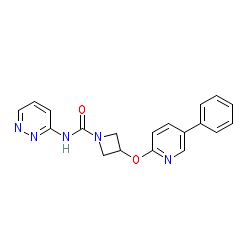GtoPdb is requesting financial support from commercial users. Please see our sustainability page for more information.
|
Compound class:
Synthetic organic
Comment: This is one of the fatty acid amide hydrolase 1 (FAAH) inhibitor compounds claimed in patent WO2009109743 [2]. FAAH inhibitors are being investigated for their potential analgesic action.
Ligand Activity Visualisation ChartsThese are box plot that provide a unique visualisation, summarising all the activity data for a ligand taken from ChEMBL and GtoPdb across multiple targets and species. Click on a plot to see the median, interquartile range, low and high data points. A value of zero indicates that no data are available. A separate chart is created for each target, and where possible the algorithm tries to merge ChEMBL and GtoPdb targets by matching them on name and UniProt accession, for each available species. However, please note that inconsistency in naming of targets may lead to data for the same target being reported across multiple charts. ✖ |
|
|||||||||||||||||||||||||||||||||||
| No information available. |
Summary of Clinical Use  |
| One of the compounds claimed in Vernalis' patent WO2009109743 [2] is likely be V158866, an FAAH inhibitor evaluated in clinical trials. Phase 1 V158866 results are published in [1]. A Phase 2 trial in patients with central neuropathic pain following spinal cord injury has been completed (see NCT01748695), but due to a lack of efficacy, Vernalis has suspended further development of V158866. |
Mechanism Of Action and Pharmacodynamic Effects  |
| FAAH breaks down fatty acid amides such as anandamide (N-arachidonoylethanolamine, AEA), N-oleoylethanolamide and oleamide. Inhibitors of FAAH lead to elevated anandamide levels and modulate activation of the cannabinoid receptor pathway. This mechanism has been proposed as a novel way to treat pain. |
| Clinical Trials | |||||
| Clinical Trial ID | Title | Type | Source | Comment | References |
| NCT01748695 | A Safety, Tolerability and Efficacy Study of V158866 in Central Neuropathic Pain Following Spinal Cord Injury | Phase 2 Interventional | Brigham and Women's Hospital | ||






